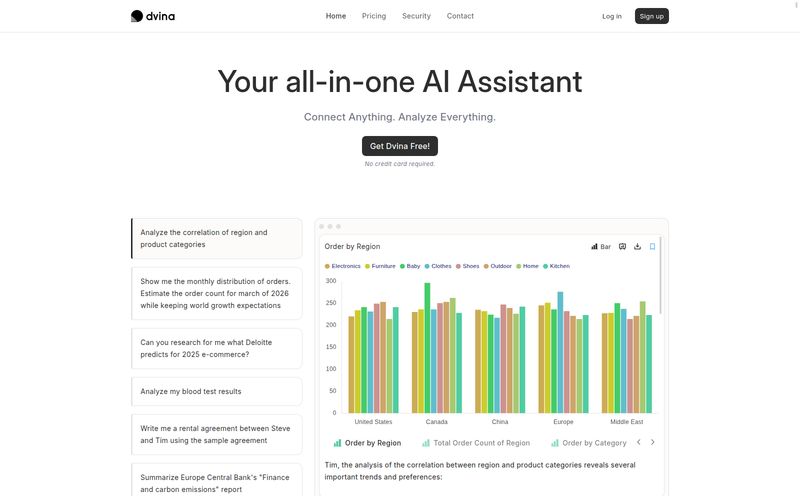If you've ever managed a team of frontline workers—in retail, hospitality, aged care, you name it—you know the special kind of chaos that comes with it. Last-minute sick calls, surprise public holidays, chasing down timesheets, and the eternal puzzle of building a roster that doesn't make everyone want to quit. For years, we've been patching it all together with a mess of spreadsheets, WhatsApp groups, and a separate, grumpy payroll system that never wants to talk to anyone else.
It’s a headache. A big one.
Every so often, a platform comes along that claims to be the 'all-in-one' solution to this mess. My inbox is full of them. But I’ve been in this game a long time, and my skepticism radar is finely tuned. So when I started digging into Humanforce, I went in with my usual dose of caution. They talk a big game: a unified human capital management (HCM) suite built specifically for the unpredictable world of flexible and frontline work. But does it actually deliver?
So, What on Earth is Humanforce?
Alright, let's cut through the marketing jargon. Humanforce isn't just another app for clocking in and out. Think of it less like a single tool and more like a central nervous system for your entire workforce operations. It’s designed to bring workforce management (the rostering and timesheets), human resources (the people stuff), and payroll (the money stuff) all under one digital roof.
This isn't a lightweight app for a five-person startup. It's a comprehensive platform aimed at businesses where managing people is complex and mission-critical. We're talking about companies like Flight Centre and The Star, who have to juggle hundreds, if not thousands, of employees across varied shifts and locations.
A Closer Look at the Humanforce Suite
The 'all-in-one' promise can be a red flag. Jack of all trades, master of none, right? But in my experience, the pain of using three different systems that hate each other is often worse than any single platform's minor flaw. So, let’s break down the core components.
Workforce Management That Actually Works
This is the bread and butter. Trying to manage rostering and timesheets with outdated tools is like trying to conduct an orchestra with a broken kazoo. It’s noisy, inefficient, and everyone ends up miserable. Humanforce’s WFM module aims to be the conductor's baton. It covers auto-rostering based on demand and employee availability, smart time capture (so you're not chasing people down), and an employee self-service app. This app is a pretty big deal. It lets staff check rosters, swap shifts, and apply for leave from their phones. Less admin for managers, more control for employees. Win-win.

Visit Humanforce
Centralizing Your Human Resources
Beyond the daily grind of the roster, there’s all the HR admin that quietly sucks up your time. Onboarding new starters, managing employee records, tracking performance, handling compliance documents. Humanforce’s HR module acts as that single source of truth. It’s the digital filing cabinet you always wished you had—one that's organized, secure, and accessible from anywhere. No more digging through shared drives for a signed contract from 2019.
Payroll and Benefits, Finally Together
For me, this is where things get interesting. The disconnect between rostering and payroll is the cause of so many organisational ulcers. You approve overtime in one system, then have to manually enter it into another, hoping you don't make a typo that shorts someone's pay. Integrating payroll directly into the HCM is the holy grail. Humanforce handles this, and importantly for any Aussie business, it has tools for compliance and integrates with updates from the Fair Work Commission. That alone can save countless hours and prevent some very expensive mistakes. Award interpretation is a nightmare, and any tool that simplifies it gets a thumbs up from me.
The Brains of the Operation: AI and Analytics
Here's where it gets a bit futuristic. The platform includes AI-powered analytics to help you make smarter decisions. This isn't just about showing you who's late most often. It's about forecasting labour demand, optimising staff costs, and even identifying potential churn risks. I saw a testimonial on their site that really hit home:
"We can now alleviate specific costs back to individual jobs, which allows for more accurate budgeting... We can understand our profit margin per person, per hour."
That’s moving from reactive management to proactive strategy. That's powerful.
Who Is This Platform Really Built For?
Let's be clear, this isn't for everyone. If you're a small office with 10 salaried employees, this is probably overkill. Humanforce shines in industries with high staff numbers, variable hours, and complex scheduling needs. Their website calls out:
- Hospitality - Retail - Aged & Disability Care - Childcare - Local Government
And that makes perfect sense. These are sectors where labor is the biggest cost and the biggest variable. Getting it right isn't just a 'nice to have', it's the difference between profit and loss.
The Not-So-Shiny Bits: A Realistic Look
No platform is perfect, and it would be disingenuous to pretend otherwise. Based on the scope of Humanforce, there are a few things to be aware of. First, any 'all-in-one' system this comprehensive will have a learning curve. You’re not just learning a single feature, you’re learning a whole new way of operating. Expect some complexity during implementation. This isn’t a sign-up-and-go solution; it’s a strategic business investment.
And that brings me to the elephant in the room...
Let's Talk About The Money: Humanforce Pricing
You’ll notice there’s no pricing page on the Humanforce website. It’s all “Request a Demo” and “Enquire Now.”
I know, I know. It's frustrating. But it’s typical for enterprise-level software. The price depends entirely on your size, your needs, and which modules you use. A 50-person aged care facility will have a very different price point than a national retail chain with 2,000 employees. While I can't give you a number, I can tell you what this pricing model implies: it’s a considered purchase. You're buying a tailored solution, not a one-size-fits-all subscription. You’ll have to talk to their sales team to get a specific quote for your business.
My Final Takeaway on Humanforce
So, do I think Humanforce is worth it? My skepticism has softened. For the right kind of business—one that's drowning in the complexity of managing a large, flexible workforce—it looks like a seriously powerful contender. It’s a heavy-duty platform for a heavy-duty problem.
The real value isn't just in the slick interface or the long list of features. It’s in the integration. It’s in having your rosters, your people data, and your payroll all speaking the same language. It's about turning that daily operational chaos into a smooth, predictable, and even strategic hum.
Frequently Asked Questions About Humanforce
- Is Humanforce easy to use?
- There's a potential learning curve given its comprehensive nature. While the employee-facing app is designed to be simple, managers and admins should expect to invest time in training to get the most out of its powerful features.
- What industries is Humanforce best for?
- It's specifically designed for industries with large, flexible, or frontline workforces, such as retail, hospitality, aged care, childcare, and local government.
- Does Humanforce handle Australian payroll awards?
- Yes, a key feature is its compliance management toolset, which includes award interpretation and integration with changes from the Fair Work Commission to help businesses stay compliant.
- How much does Humanforce cost?
- Humanforce does not publish its pricing online. It operates on a quote-based model, as pricing depends on the size of your business and the specific modules you need. You'll need to contact them for a demo and a custom quote.
- Can employees access Humanforce on their phones?
- Absolutely. The platform includes an employee self-service mobile app where staff can view their rosters, request leave, swap shifts, and manage their availability.
Conclusion
If you're still running your business on a patchwork of spreadsheets and prayers, it might be time to look at a proper HCM suite. Humanforce presents a compelling, if complex, argument for centralizing everything. It’s an investment, for sure, but the cost of chaos and inefficiency might be even higher.



